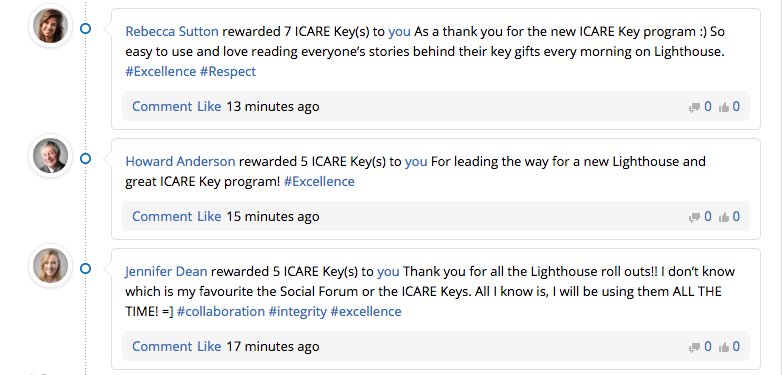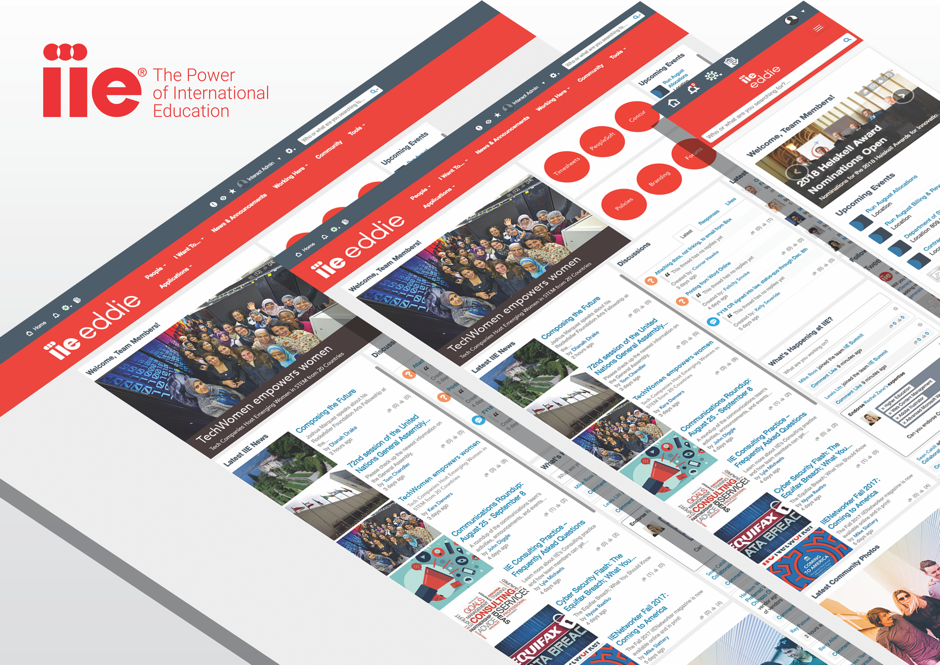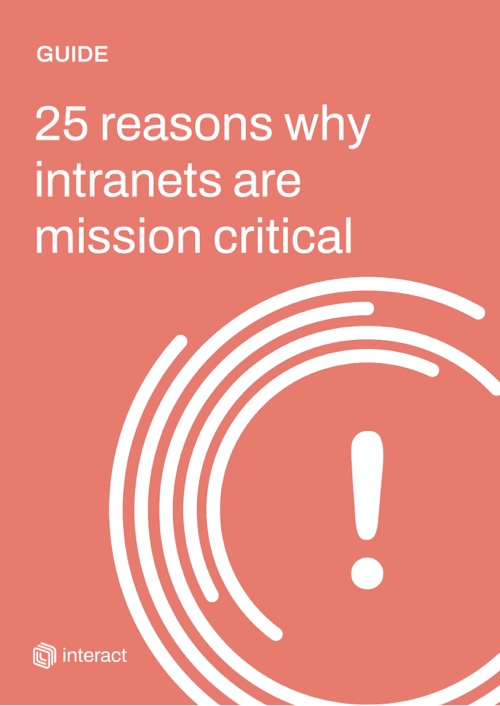Employee retention – how an intranet can tackle churn issues

While you can’t fix your high staff churn overnight, focusing on the factors that can increase your employee retention is a powerful way to future-proof your business.
Employee churn: it’s one of the biggest problems that an organization has to deal with. With a skills shortage, organizations are battling with each other to secure the best talent. And while it may cost a business to offer attractive benefits, it can cost a lot more to lose your staff to another competitor. In fact, the current stats show that the average cost of an employee leaving your company can be around £30,000. Hiring costs, onboarding, training, and loss of productivity can make a huge dent on a company’s bottom line.
This doesn’t even take into account disruptions, delays in processes, and the impact on colleagues. With such a weighty price tag associated with each person within a business, employee retention is a massive focus for every business.
You’re not going to be able to keep every single worker happy. However, it’s certainly possible to create a loyal workforce where the majority of your people stay with your organization for a prolonged time period. So, what’s the secret to effective employee retention strategies?
23 ways your workplace can use a mission-critical intranet to achieve its objectives
How an intranet can improve employee retention
The answer is complex but is based on the principles of community, communication, openness, and collaboration. The key component in all this is the intranet, which acts as a democratic platform in which all workers can connect, stay informed, and take part in discussions. In fact, a company intranet can provide incredible value to any business with concerns with employee retention. We’ll explore exactly how an intranet system can help a business stay on top of their employee communication. We’ll look at how to listen to your people, check up on any risk factors, and create a positive company culture to boost employee retention.
There are some areas in a business that require constant attention. Working on your employee retention is one of these. It’s an endeavor that will need continuous work to make sure your organization is working as well as it can be, whilst making sure its people feel happy and looked after.
What is the best way to improving employee retention? According to the Business Development Bank of Canada, the top two recommendations for improving employee communications is a company newsletter and the intranet.
Look at some of the ways the intranet plays a significant role in employee retention.
Employee recognition

Recognizing employees and colleagues is critical to retention. It helps motivate and engage the workforce. However, not every company does it because employers make the mistake that recognition equals financial incentive. This is not the case. While structured reward and incentive programs can help employee recognition – in some instances, they may be counterintuitive. This is down to the ‘over-justification effect’: once you place an expected external incentive – such as money, prizes or rewards – on a task, a person’s intrinsic motivation to perform that task decreases. With 63% of employees feeling that they do not get enough praise, it’s clear that there is inherent value in the power of recognition.
An intranet can host a recognition system which can be used by all users to highlight great work, achievements, and acts of kindness happening within the organization. It has a significant influence on productivity, motivation, satisfaction, enjoyment, and loyalty.
One business that has used their social intranet to celebrate the people that make up the organization is MidPen Housing. Their iCare Keys feature of their system has allowed the firm to recognize individuals within their company and celebrate hard work and good deeds. Each employee is handed twenty virtual keys each month to give out to their peers. These acknowledgments include one of their company values hashtagged in, to highlight the value that the recipient adds to the company. The keys can then be exchanged for gift vouchers.

Not only are employees showing gratitude to each other, but also acting out their five company values, Integrity, Accountability, Collaboration, Respect, and Excellence every day. Kim Bratcher from MidPen has seen employee recognition surge beyond all expectation since their collaboration with Interact and the introduction of iCare Keys.
“Today, more employee recognition is shared on a DAILY basis than what we experienced on an ANNUAL basis through our previous program.”
Culture

In most circumstances, culture is simply the barometer for behavior. When you have a company getting bad press, you can guarantee that the culture is negative. Conversely, an organization with a strong, positive culture usually indicates more job satisfaction, better communication, and high employee retention. A business which listens to their workers cultivates a comfortable, social environment and looks after their people beyond the obligatory healthcare package. Addressing mental health, offering new opportunities for development and providing enough breaks and annual leave days can contribute massively to employee retention, low absenteeism, and productivity.
An intranet can act as a platform where employees can view all the perks of their employment. But it can also count for much more in building a happy workplace culture. Travelex has demonstrated this to great effect on their intranet, The Lounge. It’s here where staff are committing time to share their thoughts, dreams, ambitions, and life stories on the intranet. This level of engagement is a sure sign that something positive is happening. With Travelex, this is a daily occurrence – with an average of eleven blogs a day being posted to the site. These blogs range from monthly updates from executives to colleagues in the bureaus sharing every aspect of their lives. The engagement of the intranet and the sharing of positive feedback and stories from colleagues have helped the globally dispersed company create a tight community. As Tricia Scott, global intranet manager for Travelex comments,
The Lounge community is exactly what we hope for and more, a tight-knit family where we all support each other and really strive to use the platform not only as an Internal Comms tool, but to cultivate a culture of openness, sharing and really hit our objective to support and encourage collaboration and communication.
Communication and collaboration

When you’re not able to communicate and collaborate with your employees, problems can quickly begin to arise. Enabling proper channels for your people to work together is so important for employee retention.
The 2018 State of Employee Communication and Engagement Report from Dynamic Signal discovered that 33% of workers have wanted to quit their jobs because they are so frustrated with poor communication which leaves them less informed, more confused about their jobs, and crammed with anxiety.
23 ways your workplace can use a mission-critical intranet to achieve its objectives
However, an intranet can be a great medium in which teams can collaborate with each other, while receiving – and being able to respond to – information from the larger organization. This is particularly crucial to larger businesses with teams who are separated by countries, time zones, and languages. How can a business counter these obstacles to enjoy easy communication and collaboration?
When it came to unifying a globally dispersed organization, the IIE story holds up as a lesson in how to do things right. The organization implements over 200 programs from 19 offices worldwide; serving more than 42,500 enrolled participants and benefitting 1,400 member institutions across the globe, with around 5,700 enrolments in the US alone. With this setup, the need to have clear channels of communication, and the ability to work together is clear.
Deploying an Interact intranet has helped IIE comprehensively organize their communications. One of its features, Interact teams, has enabled individual team ‘sites’ to provide dedicated spaces for working teams. This allows all users to communicate and collaborate quickly and easily with immediate members. Team members can also upload content or documents specific to their projects or programs, supported by easy navigation and search to make information accessible. Forums within each team provide the social element IIE were seeking, where peers can ask, answer, and resolve questions within a simple, yet effective interface.

“With Interact, our office in Houston can see what colleagues are working on in Mexico City and Hong Kong, giving us all a feeling of pride in the organization and the work we do together. It’s also much easier to find and communicate with employees globally, and there are great knowledge-sharing features”
Sandra Roldan, Intranet Specialist at IIE.
Job satisfaction

How happy are your employees? For management, it’s challenging to find out the actual thoughts and feelings of the workforce. Small talk and social chat don’t really give anything away, and even the formality of appraisals can stifle any desire to be frank. Many businesses struggle to tap into the mindset of their employees, and this can cause severe problems with staff churn. Resentment, frustrations, and unspoken issues can bubble away without ever having space to be shared. How can you ever find out how happy your staff are, if there’s no opportunity for them to have an open and honest conversation?
Pulse surveys are one of the ways an employer can overcome this challenge. While annual surveys can often be time-consuming, and infrequent, pulse surveys can measure engagement and track change very quickly. They are a great way of focusing on a particular area for improvement. They are short, concise, and very specific. You can use one question or ten, and the data will provide an insight into the thoughts, feelings, engagement, and understanding of the employee. And it’s all confidential – the employee can anonymously give feedback without any fear of being challenged.
And unlike the more traditional annual survey, pulse surveys are quick to do, and the data that comes off them can be instantly collated and tracked throughout the year. This is an excellent way of tracking employee satisfaction over a period of time.
Benefits

Healthcare plans, free dental care, company cars, and free gym memberships are some of the many common perks that businesses offer. While benefits and perks are a great way to get employees interested in a company, they’re not among the leading factors that keep employees satisfied with the job long-term.
If you’re going to offer perks and benefits to your employees, it’s important to shape them to your people. Making the working day more flexible to your employees is one such way. Flexible working hours, the ability to work from home and cut the lunch hour in order to leave a little earlier are all ways in which a business can ease the working day for people. This is particularly useful for those with long commutes or dependents.
“In the survey of 2,011 UK employees and 502 employers, it was found that the benefit workers valued the most was between 22 and 35 days of annual leave at 44%. A pension scheme was also highly desirable at 41%, followed by flexible work hours at 39%.”
Elite Business Magazine
Other businesses offer free lunch, free drinks, joining bonus, annual gifts, rewards, and discounts. While these are an attractive offering when you’re choosing where to work, they’re not a massive incentive to stay at a company. When employees’ home life is as hectic as their work-life, anything to help them with the daily juggle is a lot more beneficial. So, generous holiday allowances, critical illness cover and good pension schemes are all benefits that a business should focus on if they’re looking at ways of reducing employee churn.
This, of course, can all be managed from the intranet, where HR can keep details of each employee and their specific benefits, and employees can look at what is available to them. The system can host integrations from third-party providers such as health plans, insurance companies and pension schemes.
Keeping your people happy will be an ongoing challenge, but the alternative is massively risky to a business. In this current ‘buyer’s market’ where employees are able to bounce from one organization to another in search of better perks – it’s up to you to make the idea of longevity with a company an attractive offer. And you do this by finding out what it is that your people really want. Generally, what employees want are purpose, reward and ease – which are all very achievable.
What an intranet does is to make these requirements manageable. By supporting your HR requirements and enabling your employees to access what they need, you have a system that contributes to so many valuable and rich ways. And with figures per exiting employee standing around £30,000 – an intranet that can help you combat staff churn is one of the wisest investments your organization can make.

